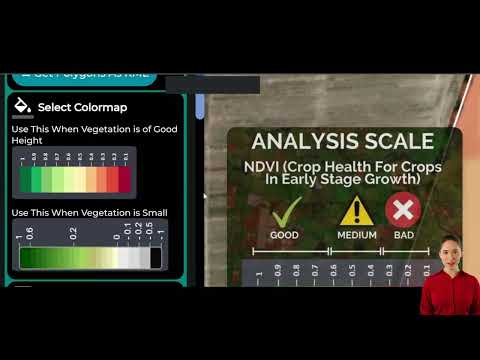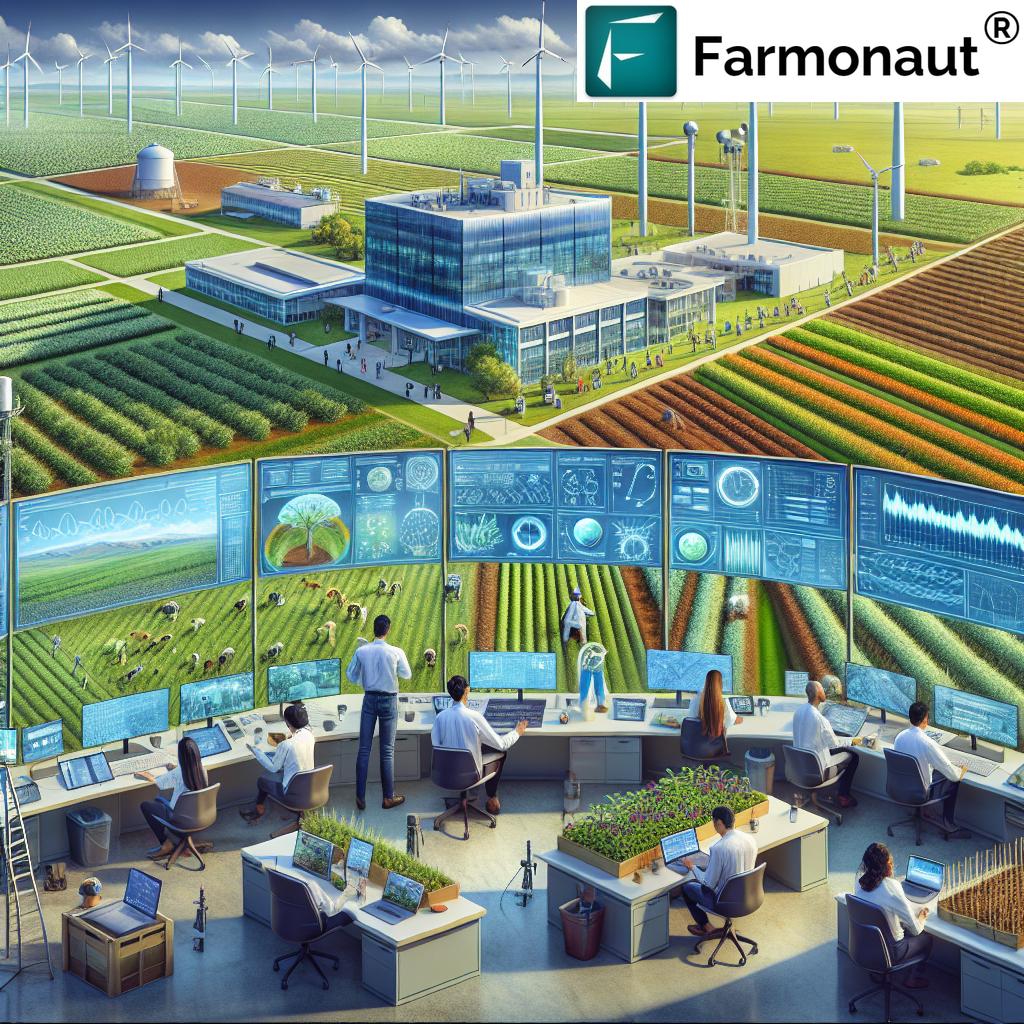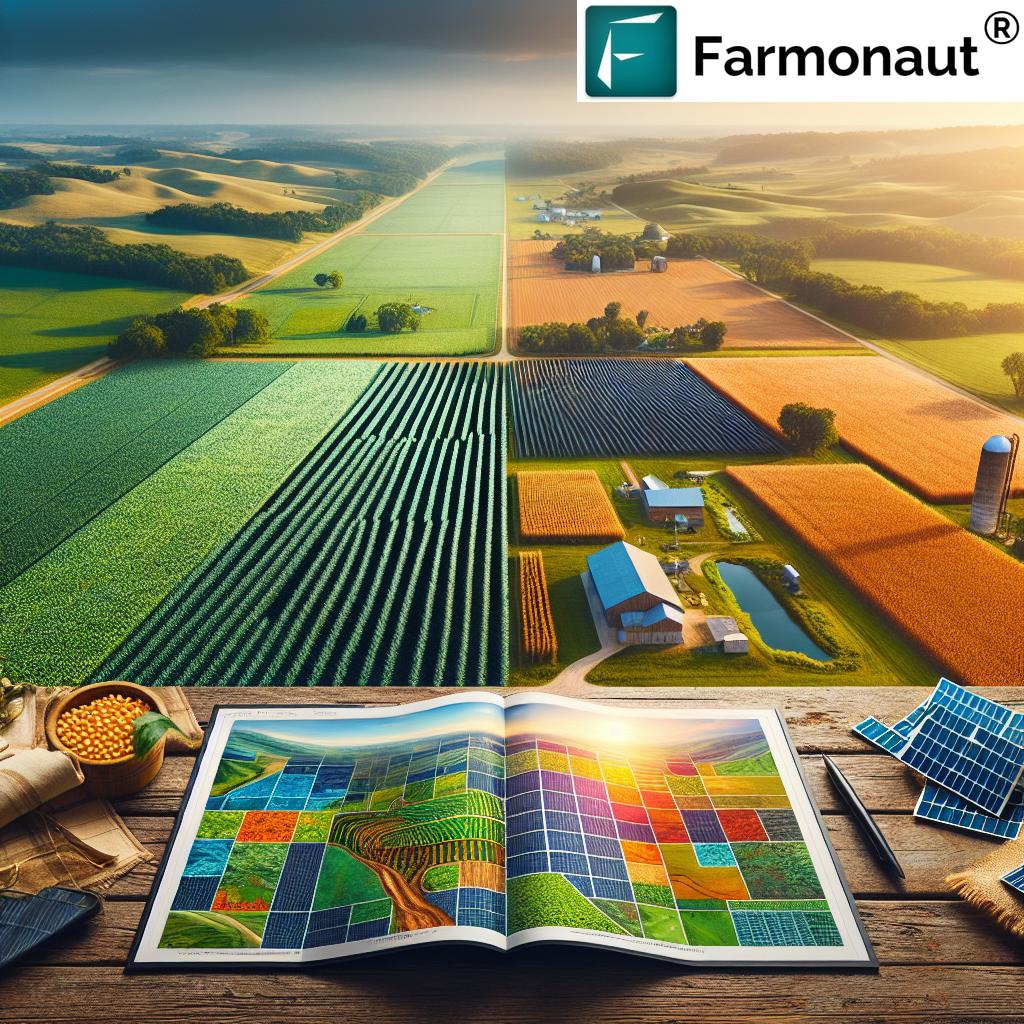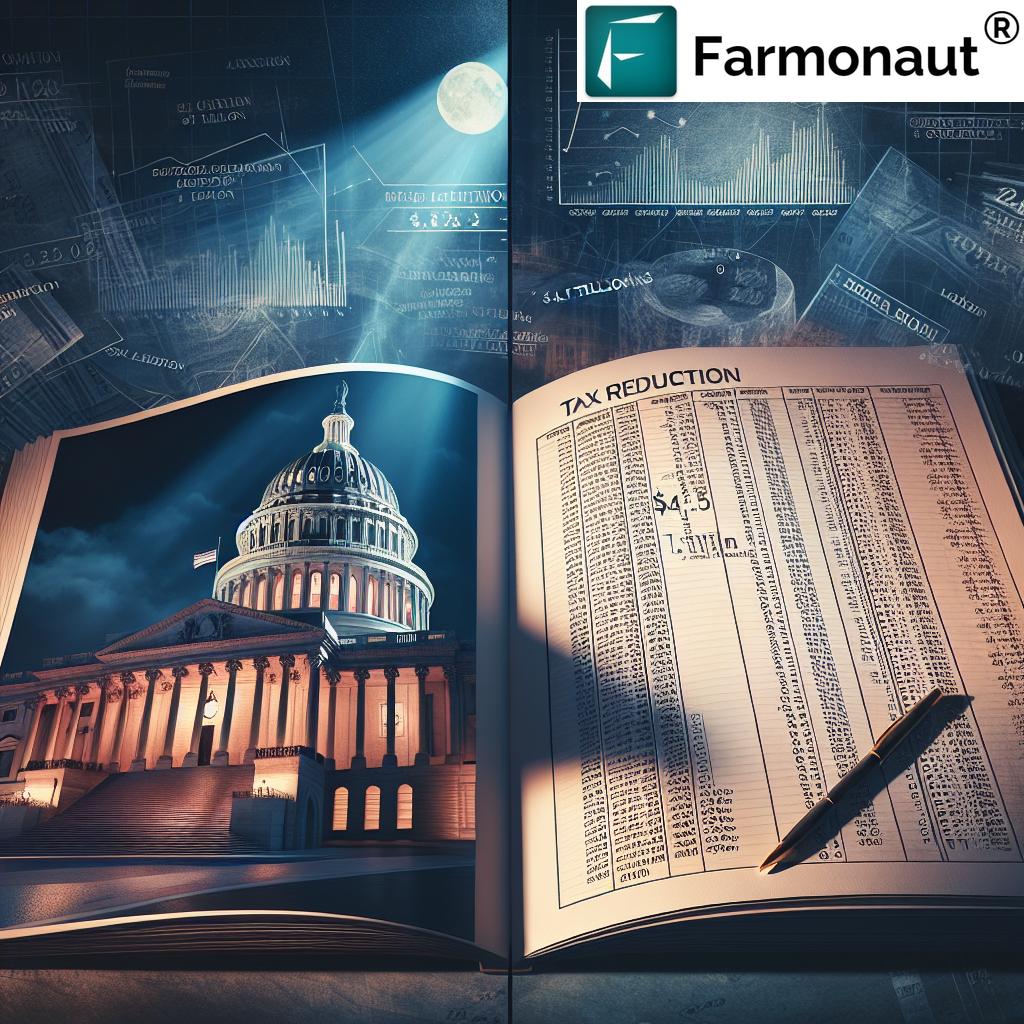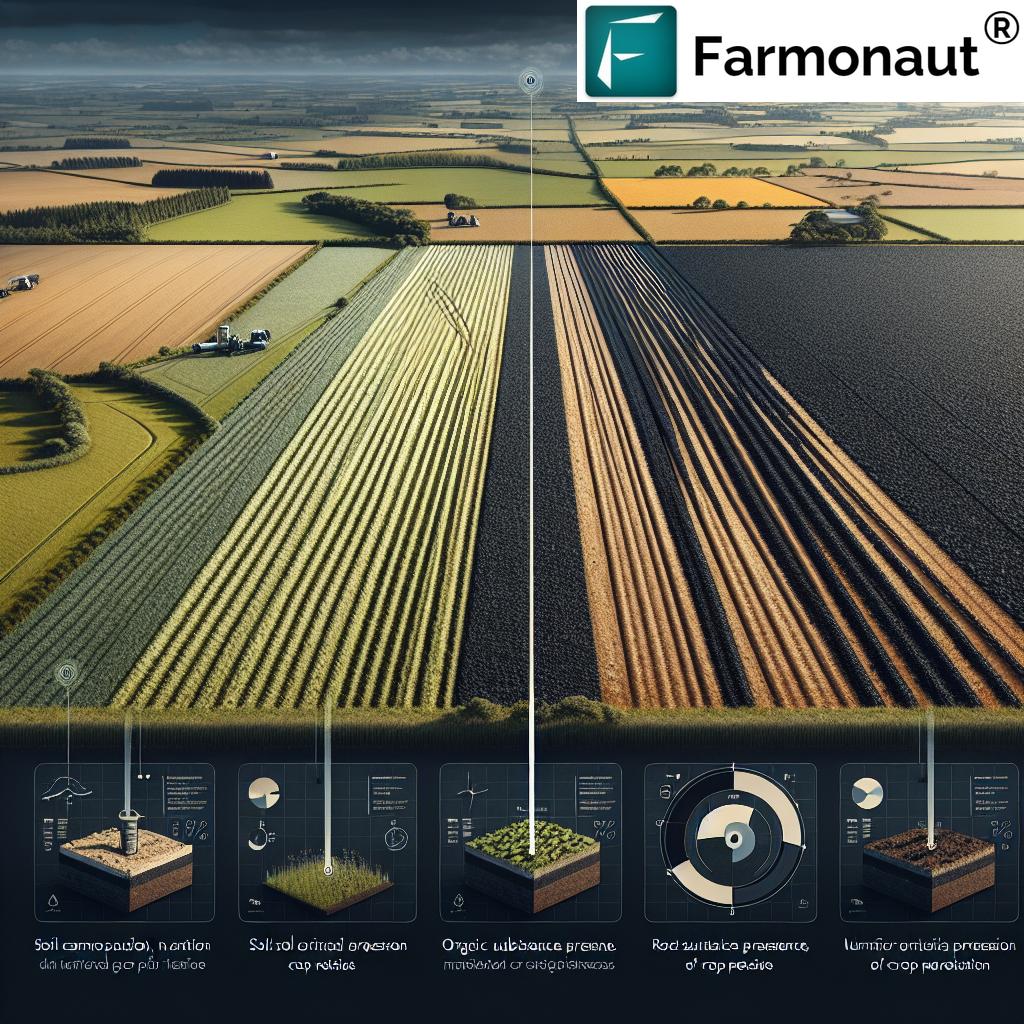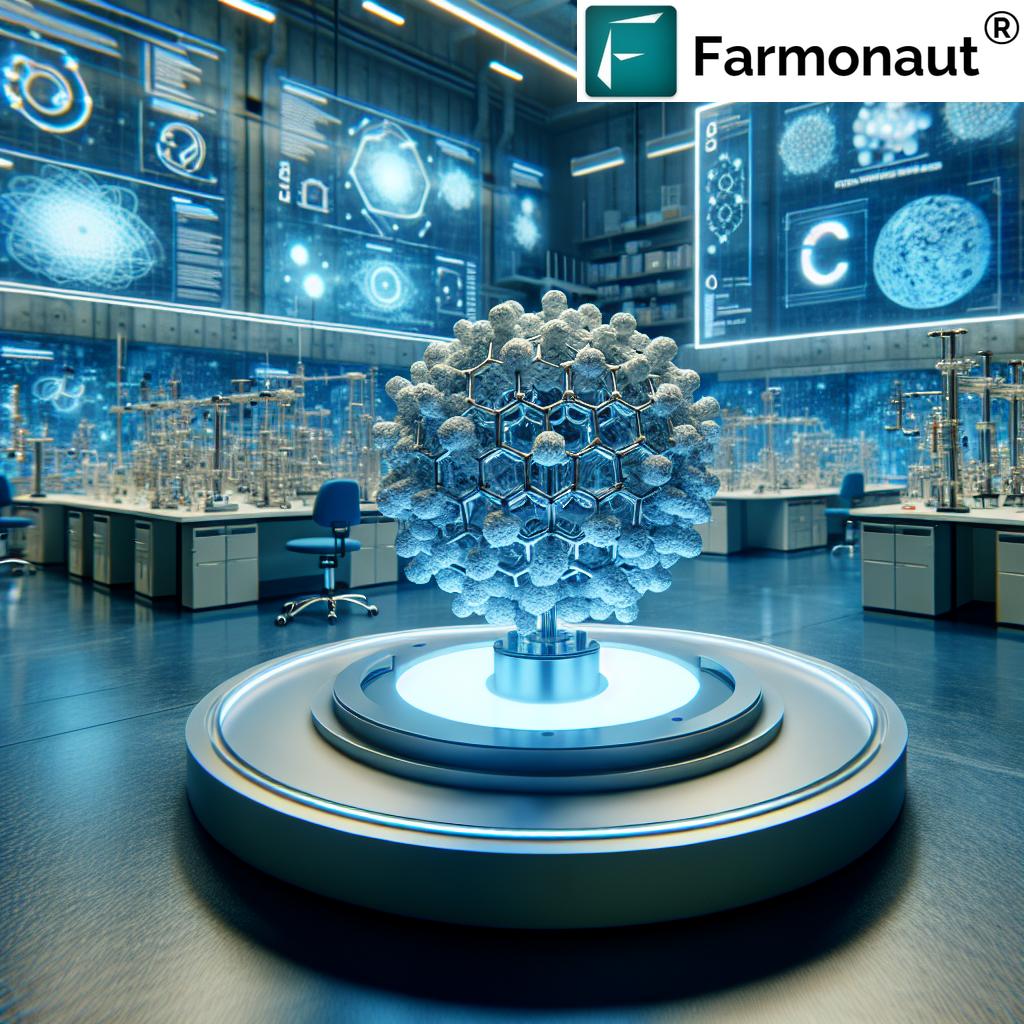Revolutionary All-Steel Swine Barns in South Dakota: Advancing Sustainable Animal Agriculture with Efficient Livestock Housing
“All-steel swine barns can reduce energy costs by up to 30% compared to traditional structures due to superior insulation.”
In the heart of the Midwest, a revolution is taking place in the world of animal agriculture. The United States, particularly the state of South Dakota, is witnessing a transformation in livestock housing that promises to reshape the future of sustainable farming. We at Farmonaut are excited to explore the innovative world of all-steel swine barns and their impact on efficient livestock housing and sustainable animal agriculture.
As we delve into this topic, we’ll examine how these modern structures are enhancing biosecurity, improving energy efficiency, and streamlining farm management practices. Join us as we uncover the myriad benefits of these state-of-the-art facilities and their potential to revolutionize the agricultural landscape.
The Rise of All-Steel Swine Barns in South Dakota
The prairie lands of South Dakota have long been a bastion of agricultural innovation. In recent years, the state has emerged as a pioneer in adopting all-steel swine barns, setting a new standard for efficient livestock housing across the Midwest and beyond. These modern structures are not just buildings; they represent a paradigm shift in how we approach animal agriculture in the 21st century.
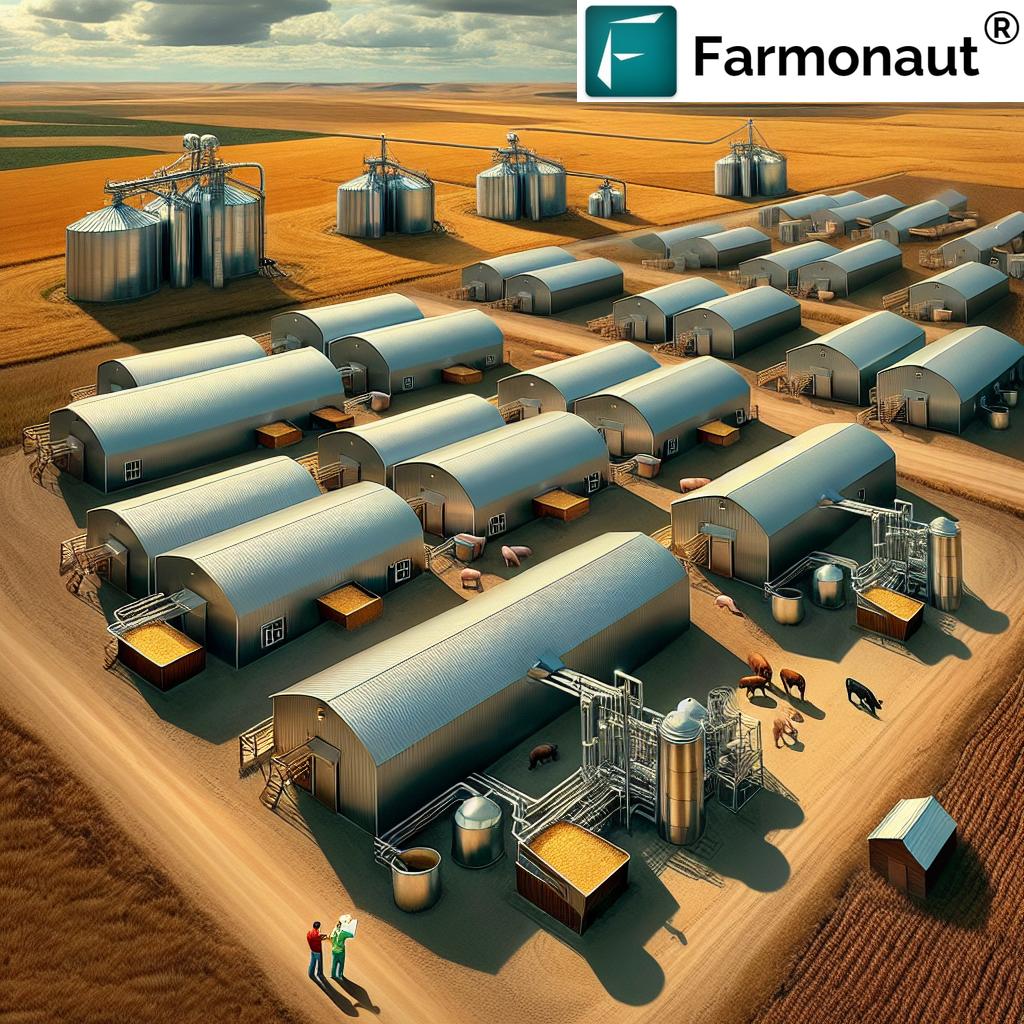
The transition from traditional wooden barns to all-steel structures is not just a change in materials; it’s a leap towards more sustainable and efficient farming practices. These new barns are designed with the latest advancements in agricultural technology, offering solutions to many of the challenges faced by modern pig farmers.
Key Features of All-Steel Swine Barns
Let’s explore the distinctive features that make all-steel swine barns a game-changer in the world of animal agriculture:
- Durability and Longevity: Steel construction provides unparalleled strength and resistance to wear and tear, significantly extending the lifespan of these structures.
- Superior Insulation: Insulated metal panels offer excellent thermal performance, creating a stable environment for livestock year-round.
- Enhanced Biosecurity: The non-porous nature of steel makes it easier to clean and disinfect, reducing the risk of disease transmission.
- Improved Ventilation: Advanced ventilation systems ensure optimal air quality and temperature control, crucial for animal health and productivity.
- Energy Efficiency: The superior insulation properties of steel combined with modern design principles result in significant energy savings.
These features collectively contribute to creating an environment that prioritizes animal health, farm efficiency, and sustainable practices.
The Impact on Sustainable Animal Agriculture
The adoption of all-steel swine barns is more than just a structural upgrade; it’s a commitment to sustainable animal agriculture. Here’s how these innovative structures are making a difference:
- Reduced Environmental Footprint: Energy-efficient designs lead to lower resource consumption and reduced carbon emissions.
- Improved Animal Welfare: Controlled environments promote better health and comfort for livestock.
- Increased Productivity: Optimal conditions lead to improved growth rates and overall productivity.
- Cost-Effective Operations: Long-term durability and efficiency translate to lower operational costs for farmers.
By integrating these aspects, all-steel swine barns are paving the way for a more sustainable and efficient future in animal agriculture.
Enhancing Biosecurity in Farming
One of the most significant advantages of all-steel swine barns is their contribution to enhanced biosecurity. In the world of animal agriculture, protecting livestock from diseases is paramount, and these modern structures offer several key benefits:
- Easy Cleaning and Disinfection: The smooth, non-porous surfaces of steel are much easier to clean thoroughly compared to traditional materials like wood.
- Reduced Pest Intrusion: Steel structures provide fewer entry points for pests and rodents, which can be vectors for diseases.
- Improved Air Filtration: Advanced ventilation systems can include high-efficiency air filters to reduce airborne pathogens.
- Controlled Environment: Maintaining optimal temperature and humidity levels helps reduce stress on animals, boosting their natural immunity.
These biosecurity measures not only protect the health of the livestock but also contribute to the overall safety of the food supply chain.
Energy-Efficient Barn Design
Energy efficiency is at the heart of the all-steel swine barn revolution. These structures are designed with sustainability in mind, incorporating several energy-saving features:
- Superior Insulation: Insulated metal panels provide excellent thermal performance, reducing heating and cooling costs.
- Natural Lighting: Strategic placement of translucent panels reduces the need for artificial lighting during daylight hours.
- Efficient HVAC Systems: Modern heating, ventilation, and air conditioning systems are optimized for energy conservation.
- Solar Integration: Many all-steel barns are designed to easily accommodate solar panels, further reducing reliance on grid electricity.
These energy-efficient designs not only reduce operational costs for farmers but also align with broader goals of sustainable agriculture.
Modern Farm Construction Techniques
The construction of all-steel swine barns employs cutting-edge techniques that set them apart from traditional farm structures:
- Prefabricated Components: Many parts are manufactured off-site, allowing for faster and more precise on-site assembly.
- Modular Design: These barns can be easily expanded or modified to meet changing needs.
- Advanced Coatings: Specialized coatings on steel components enhance corrosion resistance and longevity.
- Precision Engineering: Computer-aided design ensures optimal layout for animal comfort and operational efficiency.
These modern construction methods result in structures that are not only more durable but also more adaptable to the evolving needs of farmers.
Agricultural Technology Innovations in All-Steel Barns
All-steel swine barns are not just about the structure; they’re a platform for integrating the latest agricultural technology innovations:
- Automated Feeding Systems: Precision feeding technology ensures optimal nutrition for each animal.
- Climate Control Automation: Smart systems adjust temperature and ventilation based on real-time data.
- Waste Management Technology: Advanced systems for efficient handling and processing of animal waste.
- Monitoring and Analytics: Integrated sensors and cameras provide real-time data on animal health and behavior.
These technological advancements not only improve efficiency but also contribute to better animal welfare and environmental management.
“Modern all-steel swine barns can house up to 2,500 pigs in a single facility, maximizing space efficiency and productivity.”
Livestock Facility Management: A New Era
The advent of all-steel swine barns has ushered in a new era of livestock facility management. These structures offer several advantages that streamline operations and improve overall farm management:
- Reduced Maintenance: Steel structures require less frequent repairs and maintenance compared to traditional wooden barns.
- Improved Worker Safety: Modern designs incorporate safety features that protect farm workers.
- Efficient Space Utilization: Thoughtful layouts maximize the use of available space without compromising animal comfort.
- Integrated Management Systems: Digital platforms allow for centralized control of various barn functions.
These management improvements translate to more efficient operations, reduced labor costs, and improved working conditions for farm staff.
Insulated Metal Panels: The Backbone of Efficient Barns
At the core of all-steel swine barn construction are insulated metal panels. These innovative building components offer numerous benefits:
- Superior Thermal Performance: Excellent insulation properties help maintain stable indoor temperatures.
- Moisture Resistance: The panels prevent moisture ingress, reducing the risk of mold and structural damage.
- Durability: Resistant to impacts, corrosion, and weathering, ensuring long-term structural integrity.
- Quick Installation: Prefabricated panels allow for faster construction times compared to traditional methods.
The use of these panels is crucial in creating an optimal environment for livestock while also contributing to the overall energy efficiency of the barn.
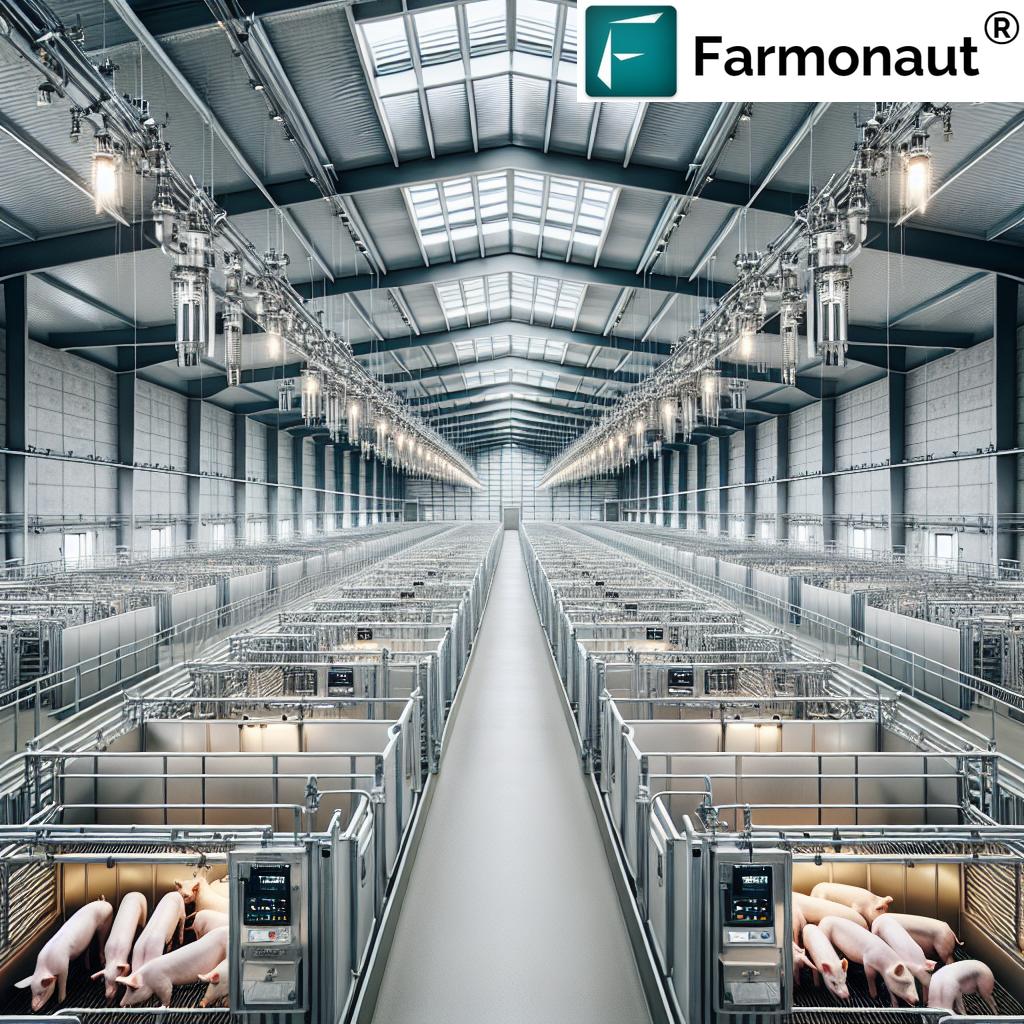
Advanced Animal Housing Solutions
All-steel swine barns represent the pinnacle of advanced animal housing solutions. These structures are designed with the specific needs of pigs in mind, offering:
- Optimized Layout: Spaces are designed to facilitate natural behaviors and movement patterns of pigs.
- Tailored Environments: Different areas within the barn can be customized for various stages of pig growth, from farrowing to finishing.
- Stress Reduction Features: Design elements that minimize stress on animals, leading to better health and productivity.
- Adaptability: Flexible designs that can be adjusted to accommodate changing industry standards and regulations.
These advanced housing solutions not only improve animal welfare but also contribute to more efficient and productive farming operations.
Comparative Analysis: Traditional vs. All-Steel Swine Barns
To better understand the advantages of all-steel swine barns, let’s compare them to traditional structures:
| Features | Traditional Barns | All-Steel Barns |
|---|---|---|
| Construction Materials | Wood, concrete | Steel, insulated metal panels |
| Insulation Properties | Moderate | Excellent |
| Energy Efficiency | Moderate | High |
| Biosecurity Measures | Basic | Advanced |
| Cleaning Ease | Challenging | Easy |
| Ventilation System | Basic | Advanced, automated |
| Fire Resistance | Low | High |
| Durability | Moderate | High |
| Estimated Long-term Costs | Higher due to maintenance | Lower due to efficiency and durability |
This comparison clearly illustrates the significant advantages that all-steel barns offer over their traditional counterparts.
Economic Impact on Farmers and the Agricultural Sector
The adoption of all-steel swine barns has far-reaching economic implications for both individual farmers and the broader agricultural sector:
- Reduced Operational Costs: Energy efficiency and lower maintenance requirements lead to significant cost savings over time.
- Increased Productivity: Optimal environments for livestock result in better growth rates and overall productivity.
- Higher Quality Products: Improved animal health and welfare can lead to higher quality meat products, potentially commanding better market prices.
- Job Creation: The construction and maintenance of these advanced structures create new job opportunities in rural areas.
- Industry Innovation: The shift towards all-steel barns is driving innovation in related agricultural technologies and services.
These economic benefits contribute to the long-term sustainability and competitiveness of the swine industry in South Dakota and beyond.
Environmental Considerations and Sustainability
All-steel swine barns align well with the growing focus on environmental sustainability in agriculture:
- Reduced Carbon Footprint: Energy-efficient designs lead to lower greenhouse gas emissions associated with barn operations.
- Improved Waste Management: Advanced systems for handling and processing animal waste reduce environmental impact.
- Water Conservation: Efficient cleaning systems and water management reduce overall water usage.
- Recyclable Materials: Steel components are fully recyclable at the end of the structure’s life cycle.
- Land Use Efficiency: Compact, efficient designs reduce the overall land footprint of livestock operations.
These environmental benefits demonstrate how all-steel swine barns contribute to more sustainable farming practices.
Challenges and Considerations
While all-steel swine barns offer numerous advantages, it’s important to consider potential challenges:
- Initial Investment: The upfront cost of constructing an all-steel barn can be higher than traditional structures.
- Specialized Construction: Building these barns requires specialized skills and equipment, which may not be readily available in all areas.
- Adaptation Period: Farmers and workers may need time to adapt to new technologies and management systems.
- Regulatory Compliance: Ensuring new structures meet all local and federal regulations can be complex.
Addressing these challenges is crucial for the widespread adoption of all-steel swine barns.
Future Prospects and Innovations
The future of all-steel swine barns looks promising, with ongoing innovations set to further enhance their benefits:
- Integration of AI and Machine Learning: Advanced algorithms could optimize barn conditions in real-time based on multiple factors.
- Renewable Energy Integration: Increased use of solar and wind energy to power barn operations.
- Advanced Materials: Development of new coatings and materials to further improve durability and efficiency.
- Precision Livestock Farming: Integration of wearable technology for individual animal monitoring and care.
These future developments promise to make all-steel swine barns even more efficient and sustainable.
Case Study: South Dakota’s Pioneering Role
South Dakota has emerged as a leader in adopting all-steel swine barns. Let’s examine how this state has pioneered these innovative structures:
- Early Adoption: South Dakota farmers were among the first in the Midwest to embrace this technology on a large scale.
- Collaborative Research: Partnerships between farmers, universities, and agricultural companies have driven continuous improvements.
- Economic Impact: The shift to all-steel barns has contributed to the growth of South Dakota’s pork industry.
- Policy Support: State initiatives have encouraged the adoption of sustainable farming practices, including modern barn construction.
South Dakota’s experience serves as a model for other states looking to modernize their livestock housing.
The Role of Technology in Modern Swine Farming
Technology plays a crucial role in maximizing the benefits of all-steel swine barns. At Farmonaut, we recognize the importance of integrating advanced technologies for efficient farm management. Our satellite-based solutions offer valuable insights for agricultural operations, complementing the advanced features of modern swine barns.
Key technological advancements in swine farming include:
- Automated Feeding Systems: Precision feeding based on individual animal needs.
- Environmental Control Systems: Automated regulation of temperature, humidity, and air quality.
- Health Monitoring Technologies: Early detection of health issues through advanced sensors and AI analysis.
- Data Analytics: Comprehensive analysis of farm data to optimize operations and predict trends.
These technologies, combined with the structural advantages of all-steel barns, create a powerful synergy for modern, efficient swine farming.
Explore how Farmonaut’s satellite technology can enhance your farm management:
Regulatory Landscape and Compliance
The construction and operation of all-steel swine barns must comply with various regulations:
- Building Codes: Ensuring structural integrity and safety standards are met.
- Environmental Regulations: Compliance with waste management and emissions standards.
- Animal Welfare Guidelines: Meeting or exceeding standards for animal housing and care.
- Zoning Laws: Adhering to local land use and agricultural zoning requirements.
Navigating these regulations is crucial for farmers considering the transition to all-steel swine barns.
Training and Education for Farm Workers
The transition to all-steel swine barns necessitates new skills and knowledge for farm workers:
- Technical Training: Understanding and operating advanced barn management systems.
- Biosecurity Protocols: Implementing stringent disease prevention measures.
- Animal Welfare Practices: Adapting to new methods of animal care in modern environments.
- Data Management: Utilizing digital tools for monitoring and reporting.
Investing in worker education is crucial for maximizing the benefits of these advanced structures.
Global Perspectives on All-Steel Livestock Housing
While our focus has been on South Dakota, it’s worth noting that the trend towards all-steel livestock housing is gaining traction globally:
- European Adoption: Countries like Denmark and the Netherlands are integrating similar technologies with a focus on sustainability.
- Asian Markets: Rapidly growing economies like China are exploring these structures to meet increasing demand for pork.
- Adaptation to Local Climates: Design modifications to suit various climatic conditions worldwide.
- International Collaboration: Sharing of best practices and technologies across borders.
This global perspective highlights the universal appeal and adaptability of all-steel swine barn technology.
Conclusion: The Future of Swine Farming
The advent of all-steel swine barns in South Dakota represents a significant leap forward in sustainable animal agriculture. These innovative structures offer a host of benefits, from improved biosecurity and animal welfare to enhanced energy efficiency and environmental sustainability. As we look to the future, it’s clear that these advanced livestock housing solutions will play a crucial role in shaping the future of the swine industry.
At Farmonaut, we’re excited to be part of this agricultural revolution. Our satellite-based farm management solutions complement the advanced features of all-steel swine barns, offering farmers powerful tools to optimize their operations and embrace sustainable practices.
Discover how Farmonaut can enhance your farming operations:
As we continue to innovate and adapt to the changing landscape of agriculture, all-steel swine barns stand as a testament to the industry’s commitment to efficiency, sustainability, and animal welfare. The revolution in livestock housing is well underway, and its impact will be felt for generations to come.
FAQs
- Q: How do all-steel swine barns compare to traditional barns in terms of cost?
A: While the initial investment for all-steel barns may be higher, they often prove more cost-effective in the long run due to lower maintenance costs, improved energy efficiency, and increased productivity. - Q: Are all-steel swine barns suitable for all climate conditions?
A: Yes, these barns can be adapted to various climates. Their superior insulation and climate control systems make them suitable for both hot and cold environments. - Q: How do all-steel barns contribute to improved biosecurity?
A: The non-porous nature of steel, along with advanced ventilation and cleaning systems, makes it easier to maintain a sterile environment and prevent disease transmission. - Q: What is the average lifespan of an all-steel swine barn?
A: With proper maintenance, all-steel swine barns can last 30 years or more, significantly longer than traditional wooden structures. - Q: How do these barns impact animal welfare?
A: All-steel barns provide a more controlled environment with optimal temperature, humidity, and air quality, leading to improved animal comfort and health.




